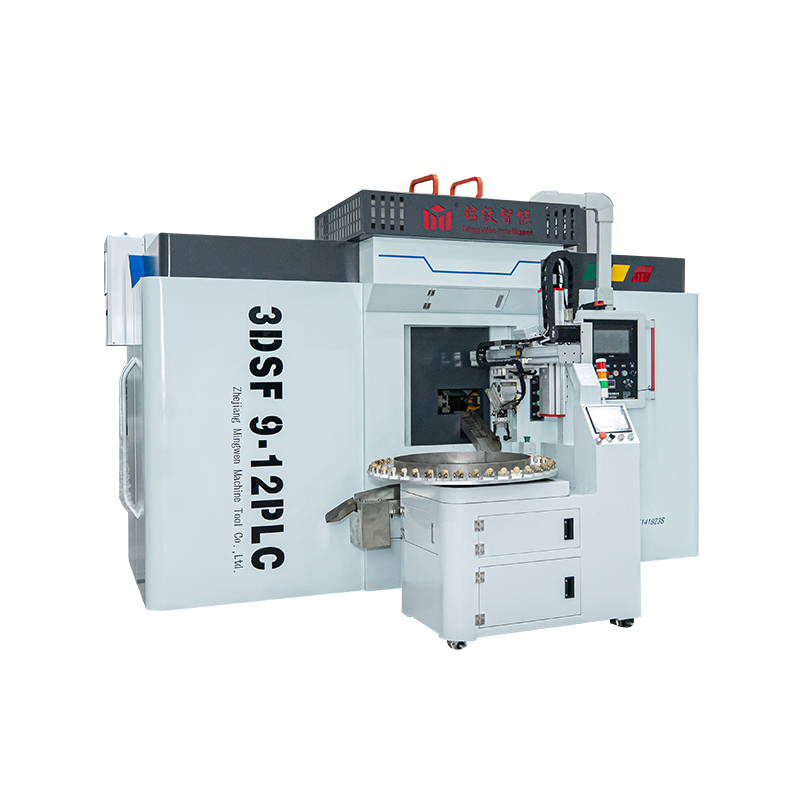Web Menu
Product Search
Exit Menu
Aggregate Machine Servo Systems See Broader Use In Automated Workshops
In recent years, the evolution of industrial automation has brought new attention to components like the Aggregate Machine Servo. As precision and reliability become increasingly important across various production environments, this servo system is finding broader implementation in automated workshops. Paired with flexible solutions like the Transfer CNC Machine, manufacturers are adapting their operations to meet evolving standards and demands.

One key reason for the rise in usage of the Aggregate Machine Servo is its ability to provide consistent motion control in systems that handle complex machining processes. These servo units are commonly embedded within multi-function tools and are capable of managing high-frequency adjustments without disrupting workflow. In settings where material flow and repetitive machining tasks are common, they help maintain smooth coordination between various units on the workshop floor.
The Transfer CNC Machine has also seen wider adoption due to its adaptable structure and capacity for high-throughput operation. These machines allow parts to be automatically shifted between different machining stages. When integrated with Aggregate Machine Servo systems, the machines can achieve more refined control across all steps of the production process. This synchronization advances to fewer manual interventions, contributing to higher efficiency and accuracy.
Automated workshops that rely on dynamic configurations are gradually moving away from rigid, single-purpose setups. They are turning toward equipment that offers modularity and responsiveness. Within this context, the Aggregate Machine Servo plays a critical role in adjusting operational parameters on the fly. Whether controlling cutting heads, spindles, or material feed mechanisms, this servo technology ensures the system responds to variations in real-time.
In parallel, the Transfer CNC Machine supports workflow diversification. Workshops with varying batch sizes and component types benefit from the machine’s ability to accommodate different operations without extensive reprogramming. This compatibility with Aggregate Machine Servo functions enhances productivity while less mechanical wear and downtime.
Another contributing factor is the increasing attention to data feedback and smart diagnostics. The Aggregate Machine Servo can relay precise information regarding its position, torque, and motion path. This data becomes particularly valuable when coordinated with the control systems of a Transfer CNC Machine, enabling the entire setup to self-monitor and adjust before issues escalate.
For manufacturing teams that prioritize consistent performance, combining both technologies helps create a more cohesive production line. The Transfer CNC Machine offers a structured framework through which materials and components are guided seamlessly. In tandem, the Aggregate Machine Servo responds to load changes and control commands with precision, keeping the production line balanced and responsive.
Technicians working in automated environments also appreciate the ease of maintenance that results from using these systems. Because the Aggregate Machine Servo typically comes with modular construction, repairs or part replacements are manageable without dismantling entire assemblies. When built into the structure of a Transfer CNC Machine, these benefits translate to reduced downtime and faster resumption of operations.
The rise of hybrid machining setups is also influencing adoption trends. Some workshops are combining turning, drilling, and milling tasks within a single cycle. Both the Aggregate Machine Servo and the Transfer CNC Machine are well-suited to this style of operation. Their compatibility with centralized control software allows them to execute coordinated tasks within tight time frames.
The shift toward smarter, more agile workshop environments is bringing renewed focus to both the Transfer CNC Machine and the Aggregate Machine Servo. As the need for adaptive, precision-driven manufacturing continues to expand, these technologies are well-positioned to support current and future production needs across various industrial sectors.
- No.1-2,24th Street, Eastern New District, Wenling City.Zhejiang Province
-
+86-13906540425
+86-13566858277
+86-576-87168388
+86-13757649712 - +86-576-87168398
- [email protected]
[email protected]
 Privacy
Privacy



 русский
русский Español
Español